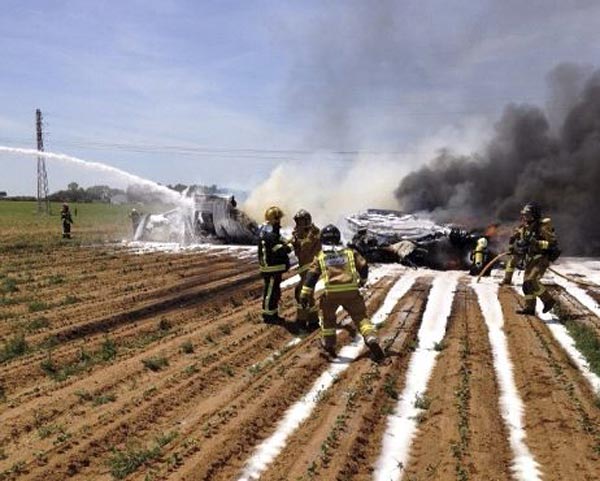Military plane crashes in Spain, killing 4 crew members
(Agencies) Updated: 2015-05-10 06:33
 |
|
Firefighters try to extinguish a fire from an Airbus A400M after it crashed in a field near the Andalusian capital of Seville, Spain, May 9, 2015. [Photo/Agencies] |
Last month Airbus dismissed the head of its military program after governments including Germany, France and Turkey complained about delays in the A400M.
James Darcy, a spokesman for Airbus in the US, said the crash was the first for the aircraft since it entered service with the French Air Force in 2013.
He said Airbus Defense and Space has been ramping up production of the plane "as part of the normal planned growth for the program." The target for this year is 14 aircraft, up from eight last year, he said.
The origins of the plane date back to the 1980s, when NATO countries anticipated a need for larger and longer-ranged aircraft, said Richard Aboulafia, an aviation analyst at aerospace consultancy Teal Group.
"The main difference is it's bigger and longer-range and it's new, as opposed to the very old aircraft they had been flying," he said.
A spokeswoman for Spain's Interior Ministry at the scene of the crash said that the two crew members who had been rescued alive had been taken to a hospital in Seville - one suffering from a head injury but still conscious and the other with serious burns. She spoke on condition of anonymity because her name is not allowed to be cited in the press.
Spain's airport authority AENA said that Seville airport was closed for just over 1 1/2 hours as its fire crews went to attend the plane crash outside its perimeter fence. Three incoming flights to Seville were diverted to Malaga and Jerez airports, AENA said.
- Pakistan helicopter crashes kill Norwegian, Philippine ambassadors
- Germanwings co-pilot practiced descent on outbound flight before crash
- Spain recalls Venezuelan ambassador over Maduro conspiracy comments
- Spain, ROK, Austria join AIIB as founding members
- Shaky Spain holds on to vanquish Ukraine
- Netherlands haunt Spain with 2-0 friendly win
- Co-pilot 'rehearsed' Alps crash descent, say investigators
- Plane crash kills two in Anhui
- US pilot killed in China crash






